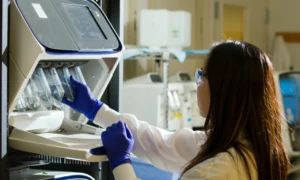Physical therapy encompasses a wide range of techniques and interventions aimed at improving mobility, function, and quality of life for individuals with various medical conditions, injuries, or disabilities. Here are some common types of physical therapy:
- Orthopedic Physical Therapy: Focuses on treating musculoskeletal injuries and conditions, such as fractures, sprains, strains, joint replacements, and post-operative rehabilitation.
- Neurological Physical Therapy: Addresses neurological disorders and conditions, such as stroke, spinal cord injuries, multiple sclerosis, Parkinson’s disease, and traumatic brain injuries.
- Cardiovascular and Pulmonary Physical Therapy: Aims to improve cardiovascular and respiratory function in individuals with heart or lung conditions, including heart attacks, chronic obstructive pulmonary disease (COPD), and pulmonary fibrosis.
- Geriatric Physical Therapy: Tailored for the aging population, targeting age-related issues such as arthritis, osteoporosis, balance problems, and mobility limitations.
- Pediatric Physical Therapy: Provides care for children with developmental delays, congenital conditions, cerebral palsy, and other pediatric disorders that affect movement and motor skills.
- Sports Rehabilitation: Addresses sports-related injuries, focuses on enhancing athletes’ performance, preventing injuries, and guiding recovery after sports-related surgeries.
- Vestibular Rehabilitation: Concentrates on treating dizziness, vertigo, and balance disorders often caused by inner ear problems or conditions like benign paroxysmal positional vertigo (BPPV).
- Amputee Rehabilitation: Assists individuals who have undergone amputations in regaining mobility, and strength, and adapting to prosthetic devices.
- Aquatic Physical Therapy: Involves exercises and interventions performed in a pool, taking advantage of the buoyancy and resistance of water to aid in rehabilitation.
- Manual Therapy: Involves hands-on techniques performed by therapists, such as joint mobilizations, soft tissue manipulation, and manual stretching to improve range of motion and reduce pain.
- Pain Management: Focuses on reducing chronic pain through techniques like therapeutic exercise, modalities, and education about pain management strategies.
- Wound Care Therapy: Concentrates on promoting healing and preventing complications in individuals with chronic wounds, such as pressure ulcers and diabetic foot ulcers.
- Women’s Health Physical Therapy: Addresses issues specific to women, including pelvic floor dysfunction, prenatal and postpartum care, and conditions like urinary incontinence.
- Oncology Rehabilitation: Helps cancer survivors manage treatment-related side effects, such as fatigue, weakness, and lymphedema.
- Hand Therapy: Specializes in treating hand and upper extremity injuries, post-surgical rehabilitation, and conditions like carpal tunnel syndrome.
- Industrial Rehabilitation: Focuses on restoring function and improving the physical well-being of workers injured on the job, with the aim of facilitating a safe return to work.
These are just a few examples of the diverse range of physical therapy specialties. The specific type of physical therapy recommended for an individual depends on their medical condition, injury, or needs. Always consult with a qualified healthcare professional to determine the most appropriate type of physical therapy for your situation.








































